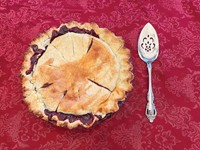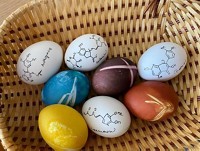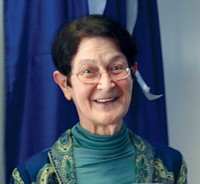Advertisement
Grab your lab coat. Let's get started
Welcome!
Welcome!
Create an account below to get 6 C&EN articles per month, receive newsletters and more - all free.
It seems this is your first time logging in online. Please enter the following information to continue.
As an ACS member you automatically get access to this site. All we need is few more details to create your reading experience.
Not you? Sign in with a different account.
Not you? Sign in with a different account.
ERROR 1
ERROR 1
ERROR 2
ERROR 2
ERROR 2
ERROR 2
ERROR 2
Password and Confirm password must match.
If you have an ACS member number, please enter it here so we can link this account to your membership. (optional)
ERROR 2
ACS values your privacy. By submitting your information, you are gaining access to C&EN and subscribing to our weekly newsletter. We use the information you provide to make your reading experience better, and we will never sell your data to third party members.
Safety
James T. Grady-James H. Stack Award For Interpreting Chemistry For The Public
by Deirdre Lockwood
February 18, 2013
| A version of this story appeared in
Volume 91, Issue 7
Sponsored by ACS
Shirley O. Corriher can tell you the best marinade for tenderizing meat (yogurt), how to get a perfect crust on your brownies (beat the batter after you fold in the eggs), and that you should use lemon zest—never juice—to give asparagus some tang. Better yet, she can tell you why. A born raconteur, Corriher is also trained as a chemist. Her cooking hints delve into protein denaturation and the structure of chlorophyll, which explains her asparagus rule. “The least bit of acid makes the ring structure of the chlorophyll pop out magnesium, and turns it a yucky Army green,” she says.
For the past 35 years, Corriher’s engaging teaching and writing have helped home cooks, chefs, and food scientists improve their concoctions through chemistry. She has penned two award-winning cookbooks, taught in cooking schools throughout the country, and written frequent columns for the Los Angeles Times’s “Great Chefs” series and Fine Cooking magazine.
“She has reached hundreds of thousands of people with news of chemistry’s role in their everyday lives,” says Harold McGee, a fellow writer about the chemistry of cooking. “Seldom have chemistry and ACS had a spokesman with such a large following.”
Corriher, 77, graduated cum laude from Vanderbilt University with a B.A. in chemistry in 1956, and she published several papers while working as a research chemist at Vanderbilt in the laboratory of Oscar Touster. But she learned to cook by spending 11 years feeding 140 teenage boys at an Atlanta private school she founded with her former husband in 1959. She laughs when she remembers her first efforts in the kitchen.
“I’d stand and crack a dozen eggs into a cold, big skillet and put it on the heat. I was literally cooking the liquid protein into the pan. I’d scrape and have this knotty mess, and the students would say, ‘You’re starving us!’ ” she recalls. Her then-mother-in-law taught her to heat the empty pan first so the protein wouldn’t stick.
Making the connection between cooking and chemistry led her to write and teach about the subject, and her clear explanations quickly found an audience. The Spanish Legume Board once asked to reprint her article on how to make lentils creamier by adding minced fresh ginger and a few spinach leaves. “A single enzyme in the ginger attacks both protein and collagen in the lentils,” Corriher explains, but she is careful to preserve a bit of mystery. “I’m not sure what a few spinach leaves do—it’s not oxalic acid like everyone thinks.”
Corriher helps cooks navigate territory from French sauces to southern biscuits in her cookbooks “CookWise: The Hows and Whys of Successful Cooking” and “BakeWise: The Hows and Whys of Successful Baking,” both of which won awards from the James Beard Foundation. She has also spoken at numerous conferences, universities, and ACS meetings.
Gary Beauchamp, director of Monell Chemical Senses Center, describes Corriher as “our invaluable ambassador for communication of chemistry—accessible, entertaining, and accurate.”
Corriher will present the award address before the ACS Division of Agricultural & Food Chemistry.






Join the conversation
Contact the reporter
Submit a Letter to the Editor for publication
Engage with us on Twitter